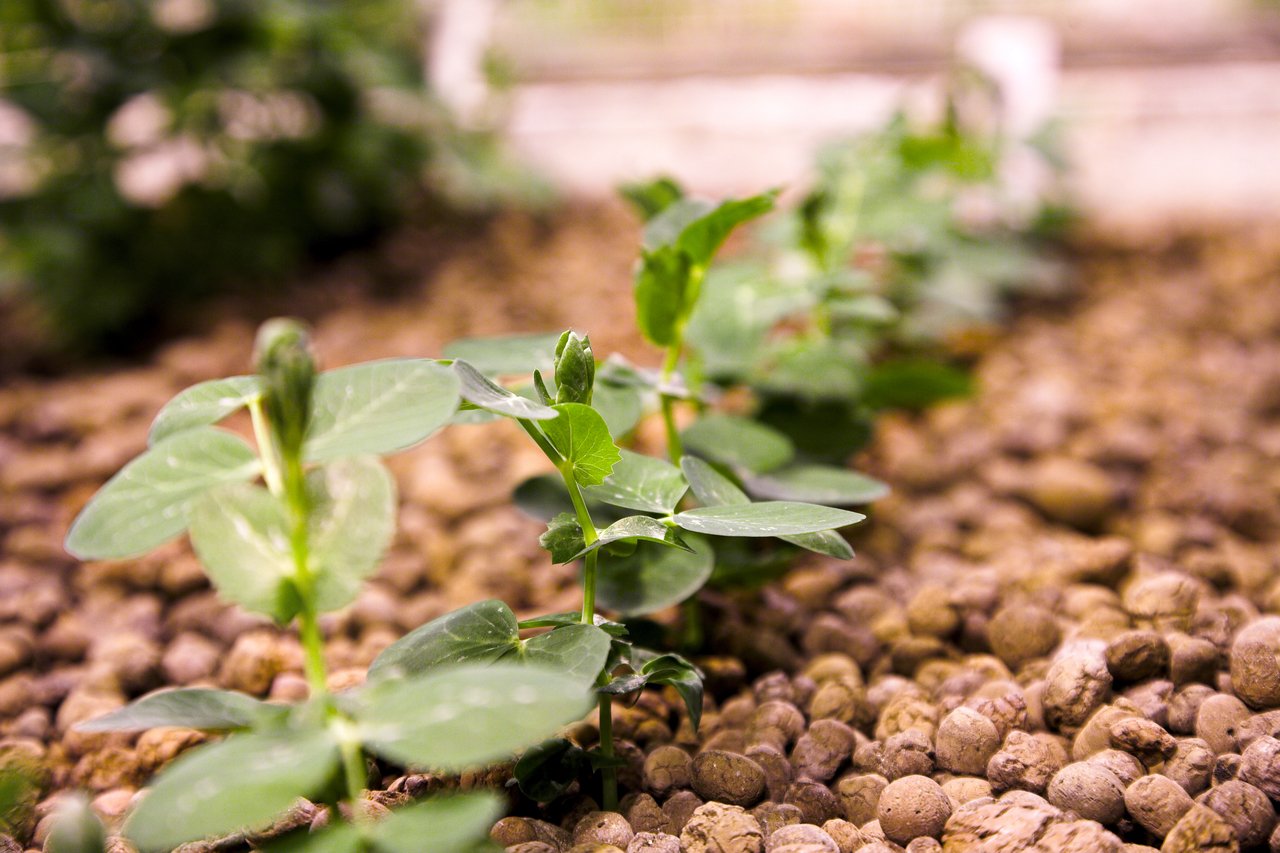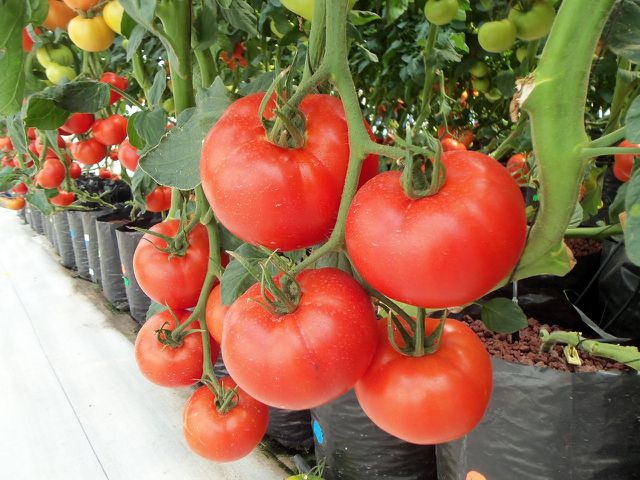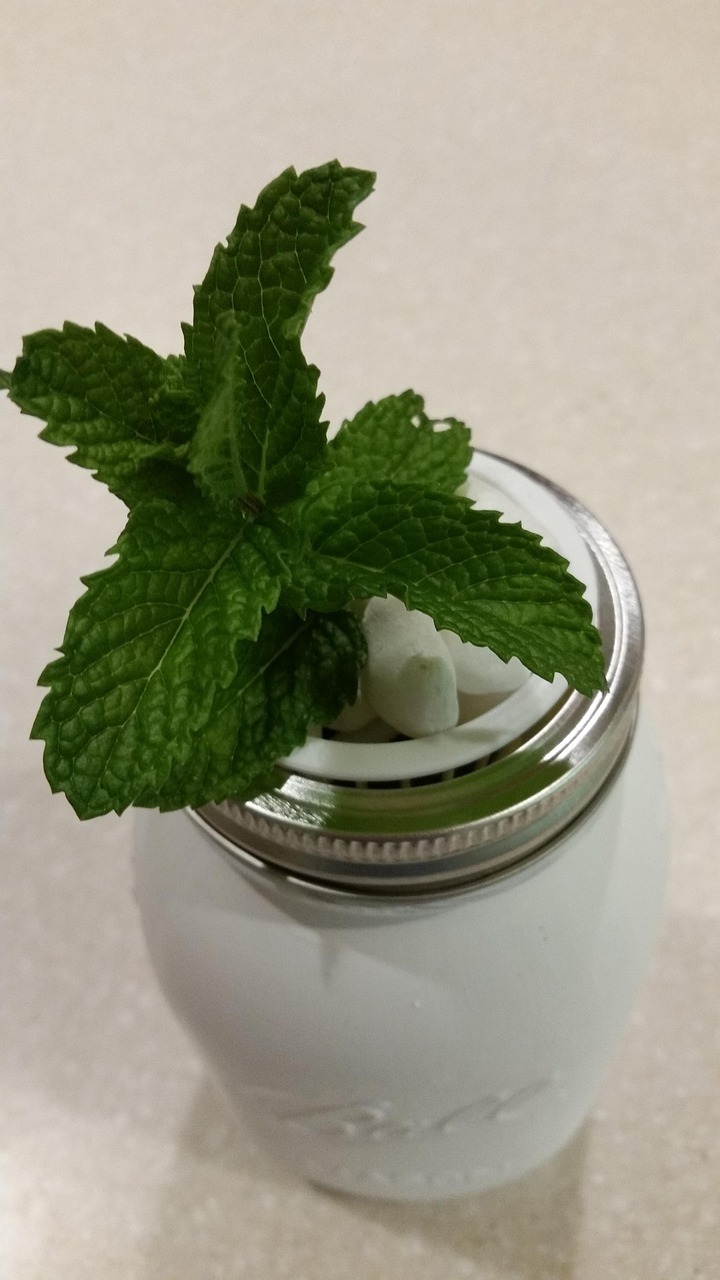You can successfully grow plants in hydroponics, even if you don’t have much success in gardening otherwise. In principle, almost all plants are suitable for this purpose. However, those with large leaves are particularly suitable.
Grow a plant without soil? That is exactly the concept of hydroponics. Instead of soil, the plant has a special inorganic, lime-free substrate. This can be, for example, sand, gravel, the volcanic rock basalt or mineral wool.
Which substrate is best suited depends on the plant. You can get advice on this at the garden center. So-called expanded clay has proved particularly successful. These are brown clay balls that have been expanded and baked in a special process. They have many air pores, absorb moisture and can be reused after cleaning.
Contents
Create hydroponics – what to look for?

Hydroponically grown plants are easier to care for because you don’t have to water them regularly. The substrate can absorb moisture and release it back to the plant as needed. You also don’t have to worry about waterlogging and root rot. When grown hydroponically, plants also develop a type of “water roots” that can tolerate significantly more moisture.
Because rot and fungus are largely prevented in hydroponics, hydroponics is also good for allergy sufferers. In addition, hydroponics provides a pleasant room humidity. However, hydroponics is not completely without work: The substrate must be cleaned at regular intervals and the plant must be fertilized.
You can find special containers for hydroponics in hardware stores and garden centers. In principle, however, you can use any container that is impermeable to water. You should choose natural materials, such as metal and ceramics, instead of environmentally harmful plastic.
In addition, you can install a water level indicator in a hydroponic system. It will tell you when you need to add water again. The indicator must be flush with the bottom of the inner pot and has markings for minimum and maximum.
Smaller plants need an inner pot and planter system. Larger plants can do without an inner pot.
Optionally, you can also use a so-called culture pot. This was specially developed for hydroponics and ensures an optimal supply of nutrients and water to the plant.
Plants for hydroponics and their cultivation

The most popular are palms and so-called perennials, which include orchids. Ferns, climbing and climbing plants can also be cultivated well in hydroponics. Even cacti are often grown as hydroponics.
If you want to grow your own plant, it is best to choose a very fine substrate for it. Place the seeds in the substrate and cover them lightly. Remember that many seeds need light to grow. Depending on the plant, you may not cover the seed completely.
Always keep the seeds slightly moist, but never too wet to prevent rotting. When the plantlets have finally formed some leaves, you can transplant them into a pot with a somewhat coarser substrate. For example, expanded clay with a medium grain size (four to eight millimeters in diameter) is suitable.
Repotting hydroponics
Plants in hydroponics need to be repotted regularly when they have grown too large.
To do this, carefully remove the substrate residue from the roots.
Prepare a layer of substrate in the new pot and place the plant on it.
Then fill the pot with more substrate.
Now water the plant with low-lime, lukewarm water.
Many substrates are reusable and you can put them back into the hydroponics after cleaning them with water or white wine vinegar.
Repotting: from soil to hydroponics

Repotting plants that have previously grown in soil is a little more difficult. You must be very careful that no remnants of organic soil material remain on the roots – they would otherwise rot.
- First, roughly remove the soil from the roots.
- Then wash the roots with lukewarm water until there is no residue left on the roots.
- Prepare a pot with a layer of substrate and carefully place the plant in the pot. Then gently cover its roots with substrate.
- Gently tap and shake the pot to distribute the substrate evenly.
- A plant coming out of the ground should not get too much water. So make sure the water level indicator stays well below maximum.
- Only when the plant has formed new roots, you can treat it like any other plant in hydroponics. You should not change the location during the first months, so that the plant can acclimatize well. It may take a few months for the plant to develop new roots.
Note: Deficiency symptoms and stunted shoots are normal in the beginning. This is because the plant has to put a lot of effort into the root conversion. So do not despair if it does not work right away.
Tips for the care of hydroponics
Once or twice a week, you should check the water level in your hydroponics. But be careful: even hydroponics can be watered too much. Even when the water level indicator has reached the minimum, you can often wait another day or two to top up the water.
Regular fertilizing is essential for hydroponics. However, conventional fertilizer is rarely suitable here. There are three main types of hydroponic fertilizers:
- Nutrient solutions contain all nutrients and salts in an aqueous solution,
- Fertilizer tablets dissolve in water,
- Slow-release fertilizers last for 3-4 months.
It is also important that you regularly clean the substrate of foreign matter and rid the plant of dried leaves.
Your plant gets brown leaves? Then you should check the following things:
Does it have enough water or too much? Some plants only need a little water.
Is your plant getting enough light?
Is the inner pot big enough for your plant?


